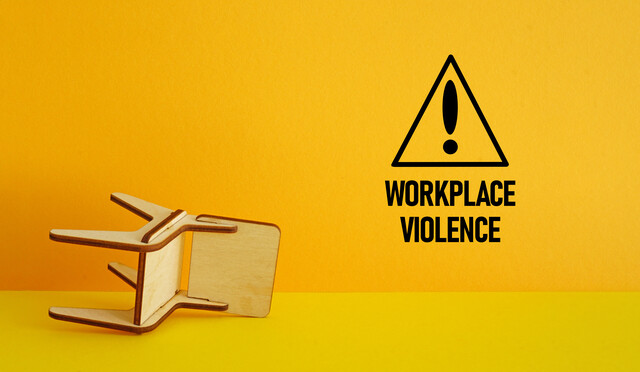-
Would you give it to the mail carrier?
-
Would you give it to your bank teller?
-
Would you give it to your neighbor?
-
Would you give it to your co-worker?
-
Would you give it to a randomly chosen stranger?
-
Would you give it to your friend?
-
Mutual communication;
-
A desire for mutual improvement;
-
A sincere feeling of care for the other person's wellbeing.
-
Mutual communication: Effective communication needs to happen for a relationship to grow.Want to learn more? Take an online course in Customer Service.
-
A desire for mutual improvement: If either of you is trying to hold the other back, or if one of you is selfishly trying to improve without caring about how the other person does, the relationship will falter.
-
A sincere feeling of care for the other person's wellbeing: This means a genuine concern for the other person.
"What ages are your children, Mrs. O'Reilly?""I remember my two daughters at that age.""Do you have any other children?"
A desire for mutual improvement:Our relationships will not last long if we consistently want the worst for people. It is likely, though, that you truly do want the best for people, so you are already halfway there!
-
If your business is a service business, like a garage, you should set up your working hours and appointments so that customers do not miss work.
-
You should ask them about their business.
-
You should offer them amazing value on the service you provide.
-
You should build relationships with other businesses and refer business back and forth so that you can refer your clients to businesses that will treat them well.
-
You should give them free advice.
-
Ask your customers how they feel and truly listen.
-
Think about ways that you can help them out.
-
Do not wait for them to tell you their challenges; anticipate them.
-
Seek to empathize with your customer.
Making an Impression
Customers, particularly first-time customers, will often make a decision about a company or service within the first few moments of visiting your business. Their impression is based on a multitude of observations that might include the neatness and attractiveness of your business, how the salespeople and staff are dressed, the general atmosphere, including any background music or noise, and how you present yourself. Saying and doing the right things make an excellent start, but if the background of your business and your appearance create a disappointment, it will color your customers' opinion of you.
First Impressions: Your appearance is the first thing that will register with a customer, and it will make an impression before you ever open your mouth. You always should be properly dressed and have a polished appearance at work. Even if you are not planning on seeing any customers on a particular day or are scheduled to work in the back of the office, dress to impress potential customers; you never know when things can change and you might unexpectedly find yourself introduced to an important customer.
Before beginning work each day, stand before a mirror and assess your appearance. Is your hair neat? Your teeth and face clean? Your clothing wrinkle-free with everything tucked in or in place? Check for loose threads and buttons, droopy socks, scuffed shoes, and any other distractions that will give you the appearance of being sloppy. Always make sure your hands are properly groomed, with clean, well-trimmed fingernails and no hangnails. Many people notice quite a lot about a person's hand during the initial handshake: ragged, chipped nail polish or untrimmed, dirty nails may give them the impression that you are not good with details. They may then leap to the conclusion that you will not be mindful of the details when working with them.
Dress appropriately so that others perceive you as an authority who is an approachable and valuable contact. If you do this, your first impression will win the customer over. If your first impression is not a good one, you will be trying hard to recover the attention and trust of your customer and you may never gain it back. In fact, the first impression most customers will have of you will be formed in the first three seconds of meeting you. In only three seconds, you will not have the opportunity to talk with them, so their impression of you is obviously based on appearance and demeanor. Dress professionally and carry yourself confidently, and your first impression will be a good one.
Attitude: You may say all of the right things and be a wonderful source of knowledge for your customer, but if the customer does not like your attitude, all bets are off. We discussed earlier the importance of asking open-ended questions and using body language and techniques such as mirroring. All of these are important, but if your attitude does not match your words or actions, you will be viewed with suspicion.
If you ask, "Would you like me to help you pick out a color that might work?" in a calm, helpful voice, that will let your customer know you are offering your assistance, not insisting on it, and you are there for them. The same question asked in a brusque, irritated voice will give them the impression that you are tired of their indecision and are trying to hustle them through the decision-making process. Think carefully when you offer to help customers make a decision: Are you trying to rush them or offering to help them make a choice that they will be happy with?
Practice some of the questions and comments you make most often in front of a mirror or, better yet, on a friend who will give you honest feedback. Speaking slowly and evenly with a warm smile will get you positive results. If you are rushing your speech or hurrying through your sales pitch, you will probably end up hurrying a potential customer right out the door.
Do not ever let your own troubles interfere with your work. Keep your private life just that: private. Remember, you are here to help your customers and they have a lot on their minds. You are at their service to provide answers, assistance, and advice. Even if you have had a terrible morning and the weather is lousy, have a smile ready and an upbeat attitude when meeting customers. If they ask, "How are you?" tell them you are great and that you are glad to see them. A polite question from a customer is not an invitation to turn the attention to you by confessing that your girlfriend or boyfriend dumped you last night! It will make your customers uncomfortable and defensive and they will soon leave, wishing that the conversation had been about them, not you.
For some reason, the habit of telling all to customers seems to be especially prevalent with customer service phone operators. The anonymity of a phone call may make it easier to confess that you are having a hard time concentrating or that you are depressed about your birthday, but do not give in to the temptation. Remember, the customer called for a specific reason, and that reason is not you.
Gestures are also important when talking to customers. In fact, one of the most important gestures is the one you should never do when talking to a customer: glancing at your watch. Every time you glance at your watch or the clock, you send the unspoken message to your customers that they are wasting your valuable time. If you have a habit of checking the time, it may be best for you to stop wearing a watch during business hours. Your customers want to think they have your undivided attention and you are willing to spend all the time necessary for them to be satisfied.
Some gestures to focus on that will help you project an enthusiastic, helpful attitude include:
- hand gestures. These can be used to emphasize a point and show your enthusiasm and energy if used in moderation. Do not overuse them, however, or you risk distracting your customer. An occasional gesture is like good punctuation: It supports the topic but does not overshadow it.
- touch. To use touch properly, you must follow the cues of your customer. The essential form of touch in business is a good, firm handshake. After that, you should base contact on the customer. For instance, putting your hand lightly on an older woman's arm to guide her across the room is appropriate if there are obstacles that could cause her to stumble. Simply ask, "May I?" as you put your hand just below the elbow or say, "Let me help you," before assisting them. If they say, "Oh, no, thanks," respect their boundaries and refrain from touching them.
- eye contact. Be sure to use plenty of eye contact when talking to customers. It reassures them that you are focusing on them. It also reinforces their focus on you and what you are saying. Talking while your eyes dart around the room will give the impression you are bored. Avoiding their eyes in favor of the floor or paperwork will give the impression you have something to hide.
Courtesy, the one step beyond: The impression you can make with good, old-fashioned courtesy cannot be stressed enough. The old phrase "common courtesy" hints that courteous behavior is a commonplace thing, but in today's business world it can be difficult to find. Courteous communication goes beyond simply being polite; most business people can pass the "politeness test." Courtesy is about actively anticipating the needs of your customers and taking a step beyond what is considered polite. It is about going the extra mile.
A courtesy is generally something you do without it being mandatory, simply to help the other person. If customers ask for some price information on an appliance, it is polite to give them a list of prices. If you want to show real courtesy, however, take the time to gather some brochures and write down when the next sale will be. Your customers will remember the extra effort you put into helping them. Whenever you can, do what a customer asks of you and then take it one step further. Give more than what is considered polite. Follow each action for your customer with a courteous gesture or action that tells them you are not finished helping them.
While it is polite to give customers your business card, it is courteous to add your cell phone number or a handwritten reminder to the back of the card. It is certainly polite to check on an order for a customer, but he or she will really appreciate your courtesy if you offer to follow up on the order in a few days and call with an update. After you have made a sale or closed a deal, be sure to offer some follow-up or call them a few days later just to see that they are still happy and to see if they have any questions. A brief thank-you note is also a nice touch that customers will appreciate; tuck your business card inside the note for them as well. The trick is to simply build on what is polite and raise it to the next level for each customer.
Last Impression: The final impression you make is just as important as the first one. When customers walk out the door, you want them to think, "My, that person was really helpful. I'm looking forward to coming back." Some business people make the mistake of taking their time until the deal is complete, then rushing their customers so that they can move on to the next potential sale. Do not make this mistake. It can sour the customer for future sales, and they may even have regrets or second thoughts on the way home and cancel their order. Take the time to fill out each order carefully and go over it with your customer in detail, answering any questions they may have.
Do not let any customer leave your business without a farewell from you. Be sure that you walk all customers, even the ones that have been difficult and have not purchased anything, to the exit and hold the door for them. Wish them a good day and wave them off with an invitation to come back any time. Let them know you are looking forward to their next visit. If it is not possible to escort them, at least acknowledge that you are aware they are leaving and ask them to come back soon.
Conclusion























